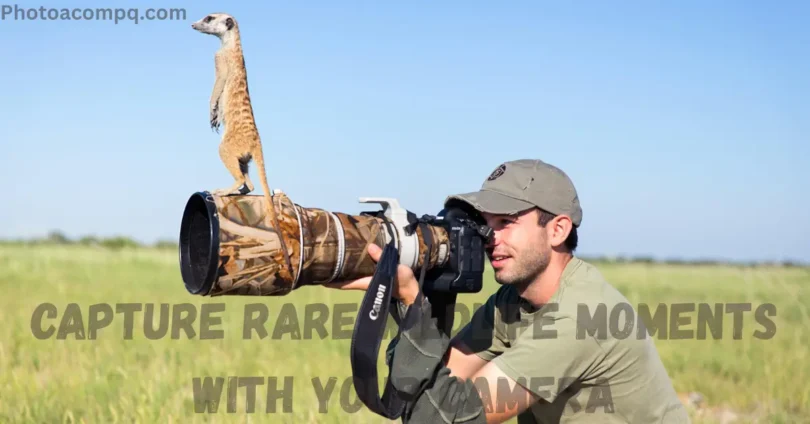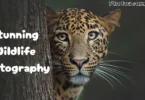Nature is full of beauty, but some moments are so rare that they become unforgettable. Watching a bird take flight, a deer leaping through the forest, or a tiger resting in the wild are experiences that not everyone gets to see. The good news is that you can keep these memories forever if you learn how to capture rare wildlife moments with your camera.
Wildlife photography is not only about taking pictures it is about telling the story of animals in their natural homes. With the right knowledge, patience, and respect for nature, even beginners can take stunning photos that show the magic of the wild. You will discover simple steps that will help you understand your camera, choose the best settings, and wait for the perfect chance to photograph animals in action.
Understand the Beauty of Wildlife Photography
Wildlife photography is not just about taking pictures. It is about experiencing the beauty of animals in their natural homes.
- Connection with nature: When you watch animals closely, you learn how they live, hunt, and survive.
- Storytelling through images: A single picture of a bird feeding its chick tells a bigger story than words.
- Conservation awareness: Wildlife photography helps people understand why we should protect animals and their habitats.
Rare moments are not planned. They happen suddenly. If you want to capture them, you must be ready at all times.
Choose the Right Camera and Gear
Having the right tools makes your job easier. You don’t need the most expensive camera, but you do need the right one.
Best camera types
- DSLR cameras: Great for beginners and professionals.
- Mirrorless cameras: Lightweight and fast, good for action shots.
- Super zoom cameras: Affordable choice for people who cannot carry big lenses.
Important gear
- Telephoto lens (200mm–600mm): Helps you take close shots without disturbing animals.
- Tripod or monopod: Keeps your camera stable.
- Extra batteries & memory cards: Wildlife moments can take hours of waiting.
- Protective covers: Save your camera from dust, water, and scratches.
Always carry a lightweight bag so you can move easily while following animals.
Learn the Basics of Camera Settings
Your camera has many buttons, but you only need to know a few main settings:
- Shutter speed: Controls how fast your camera captures a moment. Use high shutter speed (1/1000s or more) for moving animals.
- Aperture (f-stop): Decides how much light enters. Use wide aperture (f/2.8–f/5.6) for blurred background.
- ISO: Controls brightness. Use low ISO in sunlight, high ISO at night.
- Burst mode: Takes many pictures in one second great for birds in flight.
- Autofocus (continuous mode): Keeps moving animals sharp.
If you want to photograph a flying eagle, set shutter speed high, use burst mode, and continuous autofocus.
Research and Know the Wildlife Habitat
Wildlife photography is easier when you know your subject.
- Study animal behavior: Learn when they hunt, eat, or rest.
- Visit national parks: Animals are more visible in protected areas.
- Best times for photography:
- Early morning (soft golden light).
- Late afternoon (beautiful colors in the sky).
- Stay safe distance: Always keep space between you and the animal.
If you want to capture deer, visit a forest at dawn. Deer are active in the early morning.
Master the Art of Patience and Stealth
Wildlife photography teaches patience more than anything else.
- Move quietly: Sudden noise scares animals.
- Wait for hours if needed: Rare moments don’t come fast.
- Use camouflage clothing: Wear green or brown so animals don’t notice you.
- Stay still: Sometimes not moving is the best way to get the perfect shot.
A photographer may sit near a waterhole for 4 hours before a tiger finally appears.
Compose Your Shots Creatively
Photography is not only about sharpness; it’s also about creativity.
- Rule of thirds: Keep the animal off-center for balance.
- Frame with nature: Use trees, rocks, or branches as natural frames.
- Focus on expressions: Capture eye contact, playfulness, or aggression.
- Use reflections: Lakes and rivers create beautiful mirror images.
A picture of an elephant walking under sunset looks more powerful if you include the golden sky.
Capture Action and Rare Movements
Rare moments often mean action shots.
- Birds flying, fish jumping, lions hunting, monkeys playing—these are once-in-a-lifetime captures.
- Tips for action shots:
- Use continuous autofocus.
- Select burst mode.
- Keep shutter speed high (fast movement needs fast capture).
- Always be ready rare actions last just seconds.
A cheetah chasing its prey may last only 10 seconds. If you are not ready, you will miss it.
Keep Wildlife Safe and Respectful
The number one rule: Respect nature.
- Never disturb or chase animals.
- Don’t feed them this changes their natural behavior.
- Avoid loud sounds or flash photography.
- Stay on allowed paths in national parks.
- Leave no trash behind.
The goal is to capture rare wildlife moments with your camera without harming the animals or their home.
Edit and Enhance Your Wildlife Photos
Editing makes your pictures more beautiful.
- Basic editing tips:
- Adjust brightness and contrast.
- Increase sharpness for clear details.
- Balance colors for natural look.
- Crop photos to remove distractions.
But dont over edit. Keep the photo realistic.
Share and Tell the Story Behind Your Photo
A picture becomes stronger when you add a story.
- Where did you take it?
- What was happening at the moment?
- Why is this moment rare?
- Best places to share:
- Instagram and Facebook.
- Wildlife photography competitions.
- Personal blog or YouTube channel.
“I captured this rare shot of a leopard resting on a tree branch after waiting for 6 hours in Ranthambore National Park.”
Common FAQs About Capture Rare Wildlife Moments with Your Camera
Some faqs of Capture Rare Wildlife Moments with Your Camera:
1. What camera is best for wildlife photography?
A DSLR or mirrorless with a telephoto lens is best.
2. Can beginners capture rare wildlife moments?
Yes, with patience, practice, and a simple zoom camera.
3. Do I need an expensive lens?
No, a budget zoom lens can also capture great shots.
4. What is the best time to photograph wildlife?
Early morning and late afternoon (golden hours).
5. How do I stay safe while taking pictures?
Keep distance, avoid dangerous areas, and never disturb animals.
6. Should I use flash in wildlife photography?
No, flash can scare animals and harm their eyes.
7. How do I take sharp pictures of moving animals?
Use burst mode, high shutter speed, and continuous autofocus.
8. How can I capture birds in flight?
Track the bird, use burst mode, and increase shutter speed.
9. Where can I practice wildlife photography?
National parks, zoos, bird sanctuaries, and even your garden.
10. How can I improve my wildlife photos?
Practice often, edit carefully, and learn from professional photographers.
Conclusion
Wildlife photography is not only about pictures. It is about respect, patience, and love for animals. To capture rare wildlife moments with your camera, you must prepare yourself with the right gear, learn camera settings, research animals, wait patiently, and tell stories through your photos.
Every picture you take becomes a memory, a story, and sometimes even a tool to protect nature. So, grab your camera, step into the wild, and let the beauty of wildlife surprise you.



